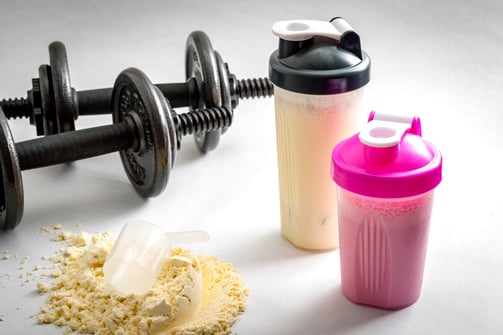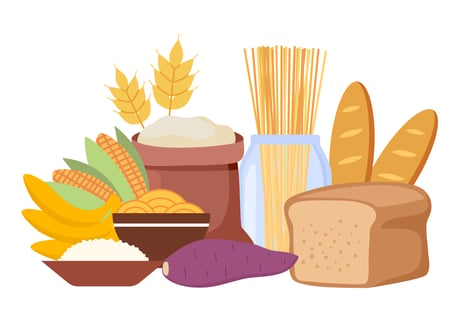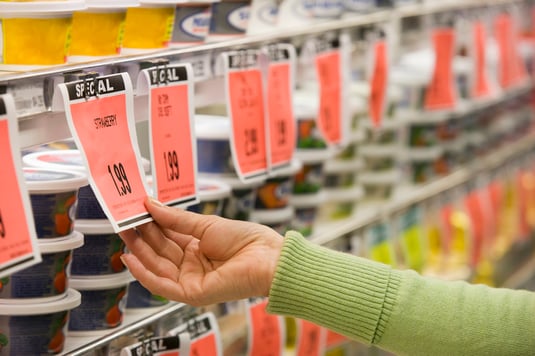 Vacations are all about relaxing, unwinding, exploring and trying new things - including food! However, when your goal is to eat healthier, vacation can be a major obstacle. Food is often used to resolve airport and road trip boredom and many of us fall victim to the “vacation mindset” - or using vacation as an excuse to go off the rails and overindulge. To stay on track without sacrificing your happiness, incorporate the following:
Vacations are all about relaxing, unwinding, exploring and trying new things - including food! However, when your goal is to eat healthier, vacation can be a major obstacle. Food is often used to resolve airport and road trip boredom and many of us fall victim to the “vacation mindset” - or using vacation as an excuse to go off the rails and overindulge. To stay on track without sacrificing your happiness, incorporate the following:
Plan Ahead
First things first, have a plan! Do some research ahead of time to determine what your options are for eating - will you eat most of your meals out, or will your accommodations have a kitchen or kitchenette for preparing meals at home? If eating out, scout for local options with healthier choices, such as fresh seafood, grilled cuts of meat, and plant-based dishes. If you have a kitchen, consider grocery shopping when you arrive so you have healthy staples and snacks on hand to help reduce the frequency of eating out, as restaurant meals are often higher in calories, fat, and salt.
Stick to the 80/20 Rule
While 100% of vacation should be enjoyable, it shouldn’t all be spent indulging. Aim for balance by practicing the 80/20 rule where you eat well and stick to your routine about 80% of the time, while saving the other 20% for treats and indulgences. Avoiding an “all or nothing” mindset and allowing yourself to enjoy the foods you want can prevent guilt and ultimately overeating or the urge to binge.
Splurge Wisely
When you do decide to splurge, don’t double down. For example, if you’re going for a hearty dinner, perhaps skip the appetizers, desserts and/or calorie-containing beverages like sodas, juices, and alcoholic beverages. Keep in mind that common vacation beverages like margaritas, pina coladas and daquiris can have up to 500 calories per drink!
Move More
Exploring your destination on foot is a great way to stay active and experience local culture. Try a walking tour or see the city via a bike. Keep your body moving throughout the day with fun physical activities such as kayaking, beach volleyball, paddle boarding or snorkeling. If possible, choose accommodations with a fitness center or pack your own gear (resistance bands, yoga mat, etc).
Heading Home
If you slip up and overindulge, don’t beat yourself up. Instead, focus on the fun you had, the memories you made, and your plan for getting back on track and setting yourself up for success when you return from your trip. Avoid trying to restrict yourself to compensate for overindulging, as this will only contribute to the “binge-restrict” cycle that many of us fall susceptible to.


 If you’ve been into fitness for a while, you likely know how important it is to fuel and replenish your body before and after exercise with the proper nutrition. However, you might be uncertain and confused about why, when, and what to eat and drink to optimize your workouts.
If you’ve been into fitness for a while, you likely know how important it is to fuel and replenish your body before and after exercise with the proper nutrition. However, you might be uncertain and confused about why, when, and what to eat and drink to optimize your workouts. 

 Grilled Zucchini Hummus Wrap
Grilled Zucchini Hummus Wrap  Chicken and Cucumber Lettuce Wraps with a Simple Peanut Sauce
Chicken and Cucumber Lettuce Wraps with a Simple Peanut Sauce  Sometimes you might think you’re doing the right things (or at least not really wrong things) when it comes to healthy eating. But those habitual behaviors might actually cause you to consume more food and calories.
Sometimes you might think you’re doing the right things (or at least not really wrong things) when it comes to healthy eating. But those habitual behaviors might actually cause you to consume more food and calories. It’s no secret that our emotions impact what we eat, when we eat, and how much we eat. In fact, sometimes it seems that the strongest cravings hit when our emotional and mental well-being is at its weakest. Emotional eating is a way to, in the short term, relieve or suppress negative feelings, such as sadness, stress, anger/frustration, or boredom. However, emotional eating can also lead people to make poor choices, such as skipping or forgetting meals, consuming fast food frequently, or consuming alcohol or caffeine in excess, all of which may have health consequences, including unintentional weight gain.
It’s no secret that our emotions impact what we eat, when we eat, and how much we eat. In fact, sometimes it seems that the strongest cravings hit when our emotional and mental well-being is at its weakest. Emotional eating is a way to, in the short term, relieve or suppress negative feelings, such as sadness, stress, anger/frustration, or boredom. However, emotional eating can also lead people to make poor choices, such as skipping or forgetting meals, consuming fast food frequently, or consuming alcohol or caffeine in excess, all of which may have health consequences, including unintentional weight gain.  Thousands of sports nutrition supplements are touted to improve strength, endurance, and a variety of other athletic factors. But do they work and are they necessary? Below are some of the most common supplements advertised for athletes, as well as what they do, how well they work, and how much is safe to supplement. It’s important to note that you should always consult your physician or a registered dietitian specializing in sports medicine before starting any new supplement.
Thousands of sports nutrition supplements are touted to improve strength, endurance, and a variety of other athletic factors. But do they work and are they necessary? Below are some of the most common supplements advertised for athletes, as well as what they do, how well they work, and how much is safe to supplement. It’s important to note that you should always consult your physician or a registered dietitian specializing in sports medicine before starting any new supplement. You’ve probably heard the saying that “not all carbohydrates are bad,” but how do you differentiate between good and not-so-good for you? When it comes to carbohydrates, in order to identify which type is best, it’s important to first understand the
You’ve probably heard the saying that “not all carbohydrates are bad,” but how do you differentiate between good and not-so-good for you? When it comes to carbohydrates, in order to identify which type is best, it’s important to first understand the  Did you know
Did you know  As the weather turns colder and we spend more time indoors, viruses will become more active among the population. Healthy eating can help you boost your immunity. Here are five of the top choices for fighting colds and flu with food.
As the weather turns colder and we spend more time indoors, viruses will become more active among the population. Healthy eating can help you boost your immunity. Here are five of the top choices for fighting colds and flu with food. With inflation at a 40-year high and grocery costs up close to
With inflation at a 40-year high and grocery costs up close to